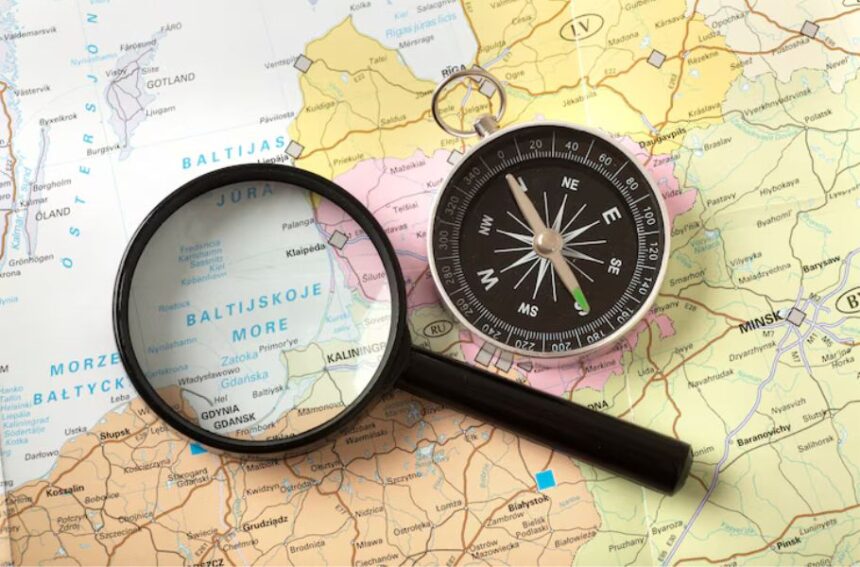Time zones are geographical regions where the same standard time is used. They were developed to manage time consistently across different locations on Earth, especially after the expansion of railroads and telecommunications. Before the adoption of time zones, local mean time, which was based on the position of the sun, varied from place to place. This made scheduling very difficult. The concept of standard time zones was introduced in the late 19th century to bring uniformity and facilitate smoother communication, travel, and business.
The Origin of Time Zones
The modern system of time zones was first proposed by Sir Sandford Fleming in the 1870s. He suggested dividing the world into twenty-four time zones, each covering 15 degrees of longitude, reflecting one hour of time difference. This system was formally adopted at the International Meridian Conference held in Washington, D.C., in 1884. At this conference, the Prime Meridian, which passes through Greenwich, England, was established as the starting point of global time, also known as Greenwich Mean Time (GMT).
Coordinated Universal Time (UTC)
Coordinated Universal Time, abbreviated as UTC, is the primary time standard by which the world regulates clocks and time. It does not change with the seasons and remains constant year-round. Many time zones are expressed as positive or negative offsets from UTC. For example, New York operates on UTC-5 during standard time and UTC-4 during daylight saving time. The concept of UTC replaced GMT as the world standard for timekeeping, although GMT is still widely used in casual contexts.
Longitude and Time Difference
The Earth rotates 360 degrees every 24 hours, which means it rotates 15 degrees per hour. As a result, time zones are generally spaced 15 degrees of longitude apart. This results in a one-hour difference between adjacent time zones. However, political, social, and economic factors often influence the boundaries of time zones, so they do not always follow strict longitudinal lines.
Daylight Saving Time
Daylight Saving Time (DST) is a practice used in some regions to make better use of daylight during the summer months. Clocks are moved forward by one hour in the spring and set back again in the fall. While DST is popular in North America and Europe, many countries near the equator do not observe it because there is little variation in daylight throughout the year. The impact of DST on energy consumption and public health remains a topic of ongoing research and debate.
Time Zone Abbreviations
Each time zone has a specific abbreviation, often reflecting the region and whether daylight saving time is in effect. For example, EST stands for Eastern Standard Time, while EDT stands for Eastern Daylight Time. Similarly, PST refers to Pacific Standard Time, and PDT refers to Pacific Daylight Time. These abbreviations are commonly used in scheduling, travel itineraries, and international communication.
Major Time Zones
There are 24 major time zones globally, but due to local variations and adjustments, there are actually more than 24 time zone offsets. Some countries span multiple time due to their large geographical size. For example, Russia spans across 11 time zones, while the United States covers six time zones, not including territories.
Unusual Time Zones
Not all time follow the standard one-hour increment. Some countries have adopted half-hour or even 45-minute time zones. For example, India operates on UTC+5:30, while Nepal is on UTC+5:45. These unusual offsets are often due to political or historical reasons and are designed to better align with solar time.
Time Zone Changes
Time zones can change due to government policies. Countries may shift their time zones to better align with neighboring countries or to improve economic ties. For example, Venezuela changed its time zone in 2007 by moving the clock back by 30 minutes to align more closely with solar time, only to reverse the decision in 2016. Such changes can cause confusion, especially for international travelers and businesses.
Global Communication
It play a critical role in global communication. Businesses operating in multiple countries must coordinate across different time zones to schedule meetings, webinars, and deadlines. Tools like world clocks and time zone converters have become essential for international teams to manage their operations efficiently.
Travel and Transportation
They are vital in the travel and transportation industries. Flight schedules, train timetables, and shipping logistics rely on accurate time zone information. International travelers must adjust their schedules and devices to the local time zone upon arrival to avoid missed appointments or confusion.
Technology and Software
Modern technology and software systems are heavily reliant on time zones. Computer systems use UTC as a base and convert local times as needed. Calendar applications, messaging platforms, and operating systems all account for time zone differences to ensure accurate scheduling and logging of events.
Time Zone Confusion
One of the main challenges with time zones is the confusion they can create, especially when coordinating across multiple regions. Misunderstandings about time differences can lead to missed meetings, deadlines, or even financial losses in some cases. This is why it is crucial to double-check time zone conversions and clarify the time being referred to.
Software Bugs and Errors
Incorrect time zone handling can lead to software bugs and errors. Systems that do not correctly account for daylight saving changes or region-specific rules may display incorrect times or fail to function properly. This is particularly important for time-sensitive applications such as trading platforms, medical systems, and security protocols.
Cultural and Political Factors
Time zone decisions are often influenced by cultural and political considerations. For example, China, despite its vast size, operates under a single time zone (UTC+8) to promote national unity. This can result in unusual solar time in the western parts of the country. Political tensions can also affect time zone policies, as seen in countries that adjust their time zones to assert independence or align with allies.
Using Time Zone Tools
Numerous tools are available to help manage time zone differences. Online converters, world clocks, and scheduling apps like Calendly and World Time Buddy simplify the process of finding suitable meeting times across different zones. Smartphones and computers also automatically adjust to local time zones, which reduces manual errors.
Conclusion
Time zones are an essential part of modern life, providing a standardized way to manage time across different regions. They enable seamless global communication, efficient travel, and reliable technology operations. Despite their complexity and occasional confusion, understanding how time zones work and how to manage them effectively is increasingly important in our interconnected world. As technology continues to evolve and globalization deepens, mastering time zone coordination will remain a crucial skill in both personal and professional settings.
FAQ’s About time zones
What is the difference between GMT and UTC?
GMT, or Greenwich Mean Time, is the mean solar time at the Prime Meridian in Greenwich, England. UTC, or Coordinated Universal Time, is a more precise time standard based on atomic clocks.
Why do some countries use half-hour or 45-minute time zones?
These time zones are usually the result of historical, political, or geographic considerations. They help certain countries align their official time more closely with solar time.
How many time zones are there in total?
Although the Earth is divided into 24 standard time zones, there are over 38 local time variations due to half-hour and 45-minute offsets and other regional adjustments.
Do all countries observe Daylight Saving Time?
No, many countries near the equator do not observe DST because daylight duration remains relatively constant throughout the year. In contrast, many countries in Europe and North America do observe DST.
How can I convert time between different time zones easily?
You can use online tools such as World Time Buddy, Time Zone Converter by TimeAndDate, or scheduling apps like Calendly, which automatically adjust for different time zones.



